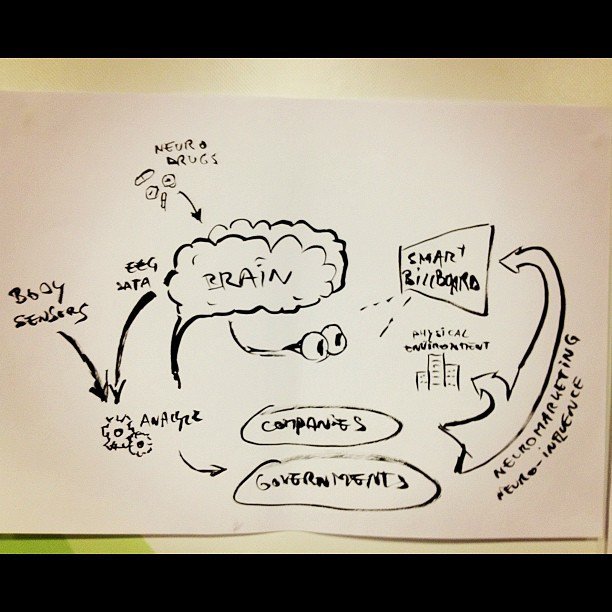Marketing Addiction
“All the toil of man is for his mouth, yet his appetite is not satisfied. For what advantage has the wise man over the fool? And what does the poor man have who knows how to conduct himself before the living?”
No part of this publication may be reproduced, stored in or introduced into a retrieval system, or transmitted, in any form or by any means (electronically, mechanical, photocopying, recording or otherwise), without the prior written permission from me.
All rights reserved.

Image Source
Hey, before you continue, I have a question for you, Are you interested in taking out a loan to consolidate debt?
If you use my Credible Referral link, you can get a cash bonus if you take out a loan.
It can be a Personal Loan or a loan to consolidate Student Loans.
Either way, if you use my link, it can be a "win-win" for us both by saving us money on interest and getting a little bit of money now!
Are we slaves to our impulses?
In the book Pre-Suasion, “social psychologist Robert Cialdini shines a light on effective persuasion and reveals that the secret doesn’t lie in the message itself, but in the key moment before that message is delivered”.
The idea at questions is whether or not there are certain things that can designed to guarantee compliance.
In short, sort of.
Although I believe we have volition (choice) in our actions, what does that look like when we are influenced, marketed to, and manipulated to do certain things?
What happens when these techniques reach into our inner thoughts and desires and tap into what we may not be able to resist?

Image Source
In order to better understand what neuromarketing is and the impacts that it has we have provided the following for the purpose of advancing the discussion.
We need to step back and take a look at what we mean by the term “neuromarketing”.
“We define neuromarketing as any marketing or market research activity that uses the methods and techniques of brain science or is informed by the findings or insights of brain science” (Genco, 2013).
Neuromarketing is an attempt to find answers to the traditional marketing questions but with the application of the latest brain science information and then to use this data to “best spend its advertising and marketing budget” to get results “generating revenues and profits for its shareholders” (Genco, 2013).
Neuromarketing has developed as a result of recent study by neuroscientists who have been studying the brain reactions of consumers to “see what part of the brain lights up when a customer decides, ‘Yes! I am buying that’” (Nazemoff, n.d.).
The collection of this information can then be used to create products and services that will best match the positive reactions in the brains of the customers.
Or more simply, “neuromarketing is a new way to measure whether and how marketing is working” (Genco, 2013).
With the Internet of Things (IoT) collecting data on us all day, we now live in a world where we can be marketed to with tailored precision.
An e-market environment provides a way to collect a more wide range of information and data points and in a more quick and efficient method.
Furthermore, once this data is collected it can be analyzed for patterns and trends to determine its effectiveness.
“It can tell us how brains translate those reactions into consumer decisions and behaviors (such as buying a product or switching loyalty to a new brand)” (Genco, 2013).
Therefore, it is now easier in an e-market environment to conduct neuromarketing.

Image Source
One example of neuromarketing is the use of “the study of online marketing and web experience” through the testing of online ad effectiveness by using metrics such as eye tracking (Genco, 2013).
Eye tracking can measure the motion of an eye relative to the head or the point of gaze of where someone is looking.
However, this method has limitations such as not being able to give the reason “why a viewer is focusing on a particular area of a web page” and “it doesn’t track peripheral vision” (Genco, 2013).
Despite these limitations, eye tracking is a good tool and one of many that can be used for neuromarketing.
Neuromarketing can be used in the financial management of a business by understanding how decisions are made and how to create favorable conditions to maintain customer satisfaction.
Neuromarketing can be used to “understand how they [customers] make decisions and how they’re influenced in making decisions” (Genco, 2013).
This knowledge can go a long way in understanding “how biases and nonconscious impressions shape their decisions” and then using this information to make better informed choices (Genco, 2013).
For an example, the financial management may need to make a deal involving payment terms with a partner (Nazemoff, n.d.). Neuroscience can help the financial management team craft a deal that would take into consideration the anticipated payback period and its impact on the partner’s incentive level to be willing to make the deal (Nazemoff, n.d.).
Businesses that are perceptive in “assessing their partners’ satisfaction level” will be able to make deals resulting in more satisfied partners (Nazemoff, n.d.).
This use of neuromarketing will also allow the financial management of a company to best spend their advertising and marketing budget on campaigns that will have higher returns because they take into consideration the brain science behind the consumer’s choices.
Although there is controversy surrounding neuromarketing, at this time, I am in favor of its continued use because it is merely the continuation and extension of traditional marketing that currently is widely accepted.
However, “if neuromarketing is worth its salt, it has to help marketers solve these problems better than other types of research” (Genco, 2013).
Traditionally the aim of marketing is to influence people to buy things and neuromarketing takes cognizance of the fact that people have brains and seeks to influencing brains in even more sophisticated ways than traditional marketing is already currently doing (Genco, 2013).
Furthermore, “consumers can use the very same insights to make better decisions” on the products they buy and to understand the sales process that is being employed to influence their decisions (Genco, 2013).
Lastly “if you believe that influencing brains is a bad thing, then, in our opinion, your complaint is with marketing, not with neuromarketing” (Genco, 2013).
I think this is a wonderful and interesting time to be alive.
What do you think?
The future together is bright.
Join me.

Check Out Some of My Previous Post:
Cialdini, R. (2016). Pre-suasion: A Revolutionary Way To Influence And Persuade. New York: Simon & Schuster.
Genco, S., Pohlmann, A., & Steidl, P. (2013). Neuromarketing For Dummies. John Wiley & Sons. Retrieved from http://proquestcombo.safaribooksonline.com.proxy.cecybrary.com/book/sales-and-marketing/9781118518977/chapter-1-what-neuromarketing-is-and-isnt/a2_05_9781118518977_ch01_html?query=((Neuromarketing))#snippet
Nazemoff, V. (n.d.). The Four Intelligences of the Business Mind How to Rewire Your Brain and Your Business for Success. Retrieved from http://proquestcombo.safaribooksonline.com.proxy.cecybrary.com/book/career-development/9781430261643/chapter-3-customer-intelligence/sec1_html_3?query=((Neuromarketing))#snippet